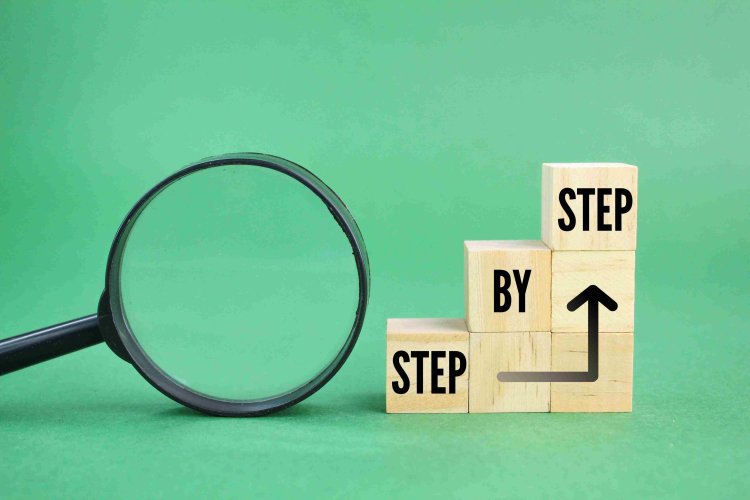Mastering Lead Scoring in Marketo: A Comprehensive Step-by-Step Guide for Driving High-Quality Leads
Learn how to build a powerful lead scoring model in Marketo with this step-by-step guide by Raghav Chugh. Optimize lead quality, align sales and marketing, and drive conversions.

In today’s fast-paced digital landscape, lead scoring is no longer just a nice-to-have. It’s an essential component of any sophisticated marketing automation strategy, particularly for teams using Marketo. With the sheer volume of data marketers are handling, being able to rank and prioritize leads based on their behavior and engagement is key to ensuring sales teams focus on the highest-value prospects.
In this article, I will guide you through building a robust lead scoring model in Marketo that not only aligns with your sales team but drives meaningful results.
What is Lead Scoring and Why Does It Matter?
At its core, lead scoring is the process of assigning a numerical value to your leads based on a range of factors, such as demographics, behavior, and engagement. The higher the score, the more qualified the lead is considered. A well-implemented lead scoring model enables your marketing and sales teams to focus on leads most likely to convert, ensuring time and resources are used effectively.
However, simply setting up lead scoring isn’t enough. It needs to be backed by accurate data and frequent optimization. Without the right model, you run the risk of over-scoring or under-scoring leads, which can misalign sales priorities and hurt overall business results.
Step-by-Step Guide to Building a Lead Scoring Model in Marketo
1. Align Sales and Marketing on the Definition of a Qualified Lead
Your first step should always be alignment between marketing and sales. This involves agreeing on what defines a Marketing Qualified Lead (MQL) and when a lead should be passed to sales. You’ll need to determine what behaviors and attributes contribute to the ideal lead profile for your organization.
Pro Tip: Run a few brainstorming sessions with both teams to hammer out the details. Some key questions to answer include:
- What types of behaviors indicate high purchase intent?
- What demographic factors (job title, company size, etc.) matter most?
- What online or offline activities signal that a lead is ready for outreach?
2. Categorize Your Lead Scoring Criteria
Once you have alignment, break down your lead scoring into two primary categories: demographic scoring and behavioral scoring. Demographic factors could include job title, industry, or company size, while behavioral factors involve engagement with content, email clicks, webinar attendance, and website visits.
Case Study Insight:
In a recent project, I worked with a SaaS company that struggled with poor lead quality. After aligning the sales and marketing teams, we identified that their strongest leads were consistently from mid-sized companies in the healthcare industry. This insight helped us recalibrate their demographic scoring to favor healthcare leads and de-prioritize others. The result? A 35% increase in sales conversions within three months.
3. Assign Weights to Lead Behaviors
Not all actions are created equal. Attending a demo webinar should carry more weight than, say, downloading an eBook. Start by listing key behaviors and then assigning them a numerical value based on how much they indicate intent. For instance:
- Visiting a pricing page: +30 points
- Attending a product demo: +50 points
- Downloading a whitepaper: +15 points
- Opening a marketing email: +5 points
Pro Tip: Be cautious not to overvalue minor interactions (like email opens) or understate major buying signals (like requesting a demo).
4. Demographic Scoring: Quantifying the Right Fit
Equally important is ensuring that the lead fits your ideal customer profile. To score demographics, consider factors like company size, job title, geographic location, and industry. You can assign negative scores to leads that don't match your ideal customer profile, such as those outside of your target region or job function.
Example: If your ideal customers are mid-level executives at enterprise tech companies, you may add +20 points for leads with titles like "Director of IT" and subtract points (-10) for leads with non-decision-making roles like "Intern."
5. Set a Threshold for Passing Leads to Sales
After your model is fully built, the next step is determining the threshold at which a lead becomes an MQL and is passed to sales. This will require testing and optimization. Typically, you will want to review data from past campaigns and sales wins to pinpoint the score that consistently delivers quality leads.
Pro Tip: Test and recalibrate your threshold quarterly. Lead scoring isn’t a set-it-and-forget-it process; it requires continuous monitoring and adjustments to stay effective.
6. Continuously Optimize Your Model
Lead scoring isn’t static. Buyer behaviors change, industries shift, and your target audience evolves. That’s why it’s essential to continuously review and optimize your lead scoring model. By revisiting both your demographic and behavioral criteria on a regular basis, you’ll ensure your model remains relevant and continues to provide high-quality leads to sales.
Case Study Insight:
I’ve seen firsthand how regular optimization can yield significant improvements. Working with a tech firm, we identified that certain behaviors, like attending live webinars, were stronger indicators of intent than previously thought. Adjusting the scoring model to weigh these behaviors more heavily led to a 25% improvement in MQL-to-SQL conversion rates.
Conclusion: Building a Lead Scoring Model that Works
A robust lead scoring model in Marketo is the backbone of effective lead nurturing. By aligning sales and marketing, carefully categorizing behaviors and demographics, assigning the right weights, and regularly optimizing the process, you’ll ensure that only the best leads make it to sales—leading to more efficient processes, higher conversion rates, and ultimately, business success.
About Me
I am Raghav Chugh, a seasoned digital marketing and technology professional with over a decade of experience in marketing automation. With three Marketo Certified Expert (MCE) certifications and extensive experience in lead lifecycle design, marketing activities, and database management, I’ve helped companies across industries fine-tune their lead scoring models to drive growth. Let’s connect on LinkedIn to explore how we can optimize your marketing strategies and ensure your success in the digital space.
About SMRTMR.com
At SMRTMR.com (Strategic Marketing Reach Through Marketing Robotics), we are dedicated to providing valuable information and resources to readers across the globe. Our articles, like this one, aim to empower individuals and businesses with the knowledge they need to succeed in the ever-evolving digital landscape.
Raghav Chugh, the founder of SMRTMR.com, brings his expertise in digital marketing and technology to each article. With a commitment to delivering high-quality, actionable content, SMRTMR.com has become a trusted source for professionals seeking to stay ahead in the world of digital marketing.
What's Your Reaction?




















